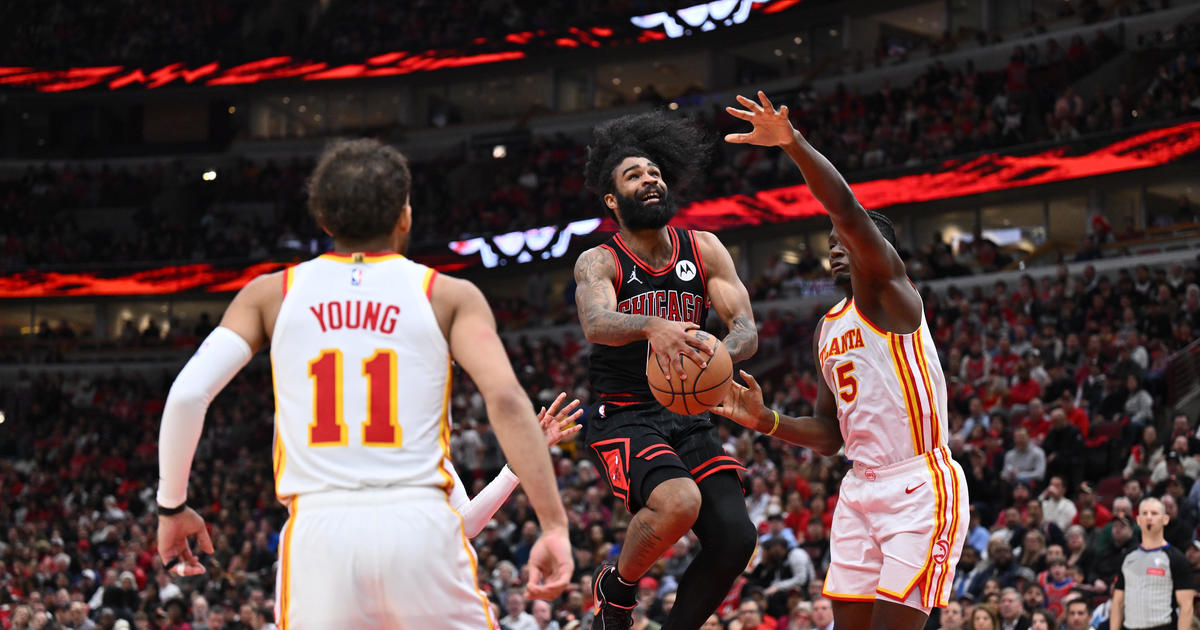Bernstein: Concussion Focus Obscures High School Football Risk
By Dan Bernstein-
CBSChicago.com senior columnist
(CBS) Angry and sad is no way to drive home after a perfectly nice day at work, but there I was yesterday, listening to a state official tell us why the developing brains of Illinois boys are safer than ever from the potentially devastating effects of football.
Craig Anderson is the Illinois High School Association's assistant executive director for football, and he told Newsradio WBBM's Bernie Tafoya what so many parents are hearing from nervous coaches and administrators these days – that expensive helmets and first-aid seminars have made everything OK.
"I believe the advances in equipment that we've had, the awareness that we have of concussions, you know, the signs and symptoms that our coaches are being educated on, you know, they're going to know right away when something's not right," Anderson said.
It's not, and we know it right now.
Anyone touting space-age helmet technology is selling something, either trying directly to market parental peace of mind or falsely promote the game's safety in an effort to keep the talent pipeline full of raw materials. The truthful message for parents is that no helmet – no matter what pseudo-scientific claims are made by any desperate manufacturer – protects the brain from sloshing around inside the skull.
School districts love spending money on shiny new helmets that look cool and promise protection unsupported by actual evidence, which is often all they need to overcome mom's better judgment and get that big, fast kid back onto the field this week. Never mind what the actual studies show, like the one released this spring at the Academy of Neurology's annual meeting in Philadelphia. Dr. Frank Conidi's group measured 10 popular helmets with 330 tests, and the results should have people like Anderson speaking more carefully about what he "believes."
"Alarmingly, those (helmets) that offered the least protection are among the most popular on the field," Conidi concluded. "Biomechanics researchers have long understood that rotational forces, not linear forces, are responsible for serious brain damage, including concussion, brain injury complications and brain bleeds. Yet generations of football and other sports participants have been under the assumption that their brains are protected by their investment in headwear protection."
As such frightening information is widely ignored by those ostensibly caring about kids' welfare, the intense focus on concussion risk has had the ironic, unintended consequence of obscuring what it is about youth football that poses greater peril: the accumulation of sub-concussive impacts over time.
Concussions are bad and always have been, but these same Illinois coaches now getting mandatory awareness training have never had a problem spotting a suffering player. That kid "getting his bell rung" or taking a play off to "clear the cobwebs" wasn't some kind of secret that just this year is coming to light. Coaches have always known about concussions by whatever euphemism they chose to use, and they will continue to care about them to varying degrees as they always have. Fact is, however, real brain damage from football is invisible and mundane.
In a five-year study performed by the Purdue University Neurotrauma Group, it was determined that half of the teenage players who never sustained a concussion suffered lingering cognitive disability.
Biomedical engineering professor Tom Talavage said in athletes never diagnosed with a concussion, brain activity begins to shut down and cognitive deficits are evident in just one season, and he spoke starkly about the kind of useless window-dressing of which the IHSA seems so proud.
"Just increasing efforts to improve concussion diagnosis or even prevent concussions is a waste of time and taxpayer money," he said.
In the initial Purdue study released in 2010, the players who suffered concussions actually had less brain damage than those who didn't, a counterintuitive result due to removal from action that interrupted the relentless absorption of lower-level impacts.
The IHSA, then, presents a troubling set of contradictions as young men get back to work across the state this week, putting their brains in plastic buckets as they and their parents chase the exceedingly unlikely dream of a college scholarship to help educate whatever neurons may emerge unscathed.
On one hand, they unveil rules to limit hitting in practice by regulating the time in full pads, a healthy move informed by medicine. But then they trot out their top football executive to parrot Big Football's intentionally misleading talking points about phony helmet safety and the assumed value of concussion "awareness."
If the state's governing body understands enough to actually begin to limit the amount of tackle football that kids are allowed to play this time of year, it has the responsibility to work just as rigorously to ensure that parents and kids have access to the whole truth.
Follow Dan on Twitter @dan_bernstein and read more of his columns here.



